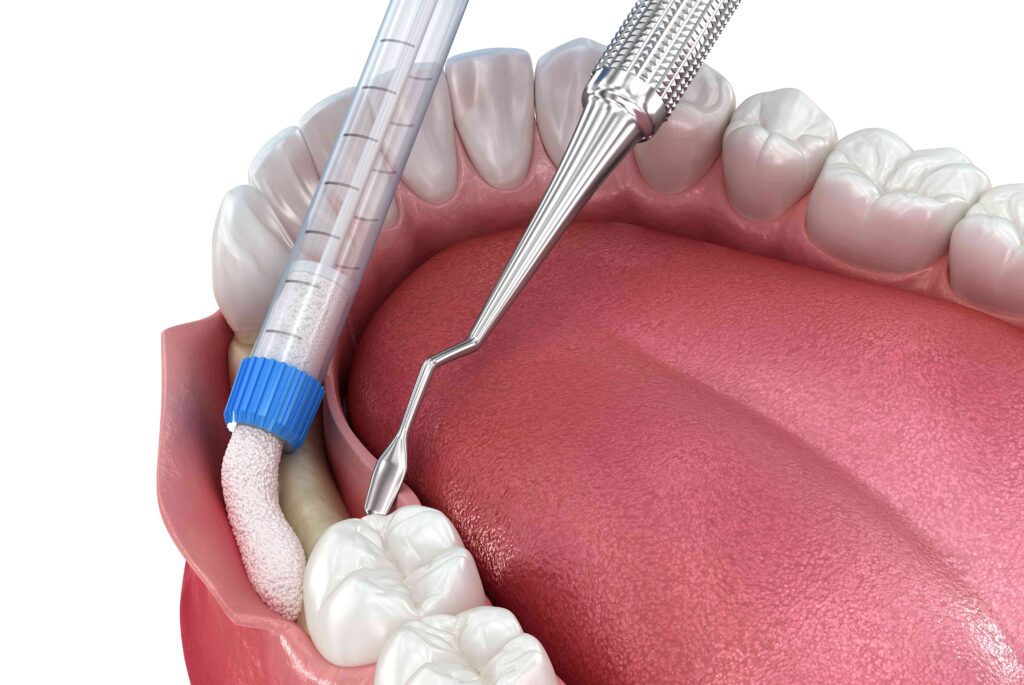
Dental implants are the best tooth-replacement option out there. Since they replace the roots of the missing teeth, they allow for a wide range of additional benefits that you can’t get with dental bridges or dentures. However, to be a candidate for the dental implant procedure, many patients need to undergo preliminary procedures – like bone grafting. Continue reading to learn more about bone grafting and why it is sometimes necessary.
How Does Missing Teeth Affect Bone Loss?
The root of your tooth stimulates the surrounding area of your jaw when you chew. This helps to keep the bone strong and healthy. However, when you lose a tooth, the jawbone is no longer being stimulated in this area. Over time, the bone tissue will be reabsorbed by the body. As time goes on, the more the bone deteriorates. This can cause difficulties when it comes to eating and speaking. It can even affect the future alignment of your surrounding teeth.
What Does Bone Grafting Look Like?
A bone graft works by transplanting bone tissue into your jaw. This bone can come form another part of the mouth, another location of the body, or from an animal donor. Sometimes, synthetic material can be used. Once this new piece of bone is placed in the correct area, it will seal itself to the old bone tissue in the area that you need it. This is a relatively minor procedure, and most patients who receive bone grafts report that their procedure was pain-free.
Why Do You Need Bone Grafting?
Needing bone grafting before dental implants is common. This technique is required if a patient doesn’t have a sufficient amount of healthy bone tissue in their mouth that can support dental implants. Much of the time, this is a result of previous tooth loss, but it can also be caused by developmental defects, gum disease, and facial injuries.
What Will Happen After Your Bone Graft?
After the bone graft procedure is complete, your dentist will prescribe you antibiotics to prevent infection. If needed, you might also be given pain medication for the recovery period, but many patients are able to do well afterward with just antibiotics. Once the bone graft is completely fused with the natural bone tissue in the mouth, your dentist will be able to place your implants. Depending on your unique case, this could take anywhere from three months to a year.
During your consultation with your dentist, they will examine your smile to see if a bone graft or another procedure is needed to prepare your smile for dental implants. You will be showing off a complete smile in just a matter of time.
About the Author
Dr. George A. Hoop earned his dental doctorate from the Emory University School of Dentistry. He has been working in the field for more than 30 years and has regularly pursued further dental implant training at the world’s most prestigious institutions, including the Misch International Implant Institute, the Pikos Institute, the Pankey Institute, and the Dawson Academy. To learn more about bone grafting or to schedule an appointment, visit his website or call (239) 594-8817.

